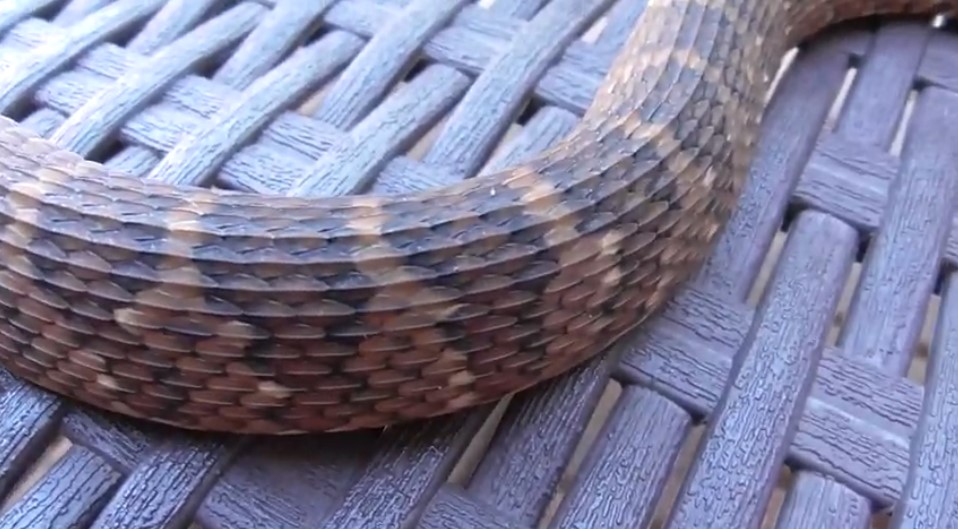
The Banded Water Snake (Nerodia Fasciata), or the Southern Water Snake as it is often known is a species of snake that is to be found across the south eastern states, with the banded coloration being different depending on the individual snake. These animals do spend a lot of their time in the water, but will also spend a lot of time on the shore too, meaning that they will often be found in areas near to a waterway. In many situations these animals can become a pest, but will rarely be found in areas too far away from a river or lake where they will be most comfortable.
Appearance And Diet
The Banded Water Snake has a banding on the body that will vary in color depending on the individual snake, and in many situations the coloring will be too dark to identify the banding. The coloring on the snakes can range from red and light brown through to dark green and brown, with the banding being significantly more obvious in the lighter colored examples in the species. The snake has a large head in comparison with many other snakes, which does have a significant number of teeth that can deliver a nasty bite. The Banded Water Snake will generally grow to between two and four feet in length.
In terms of their hunting habits, most Banded Water Snakes will do their hunting in and around bodies of fresh water such as lakes and rivers, and can hunt both in and out of the water successfully. Most snakes will survive on a diet of small fish and amphibians, although they are able to eat other animals too when they can catch them.
Behavior And Habitat
The Banded Water Snake is usually more active in the evening and night, while spending much of the day basking in the sun. When it is confronted or threatened it can emit a nasty smelling musk which is designed to repel attackers, and can deliver a nasty bite if it cannot find an escape route. Most people who do encounter a Banded Water Snake will usually find that they will flee or stay very still rather than seek confrontation.
In terms of the habitat of the Banded Water Snake, it can be found across Florida and many other south eastern states including Georgia and Texas. These animals will normally be found basking on a branch or stone near to a body of fresh water, or will also be found in the shallow waters around streams, rivers and lakes.
Reproduction And Growth Cycle
The Banded Water Snake has an unusually long mating period, with the snakes mating from the middle of winter through to the spring time. Unlike some snakes that lay eggs, the Banded Water Snake will usually lay a litter of between fifteen and twenty young snakes, which can happen throughout the summer, but mainly in July and August. When the young snakes are born they will usually be between seven and eleven inches in length, and are usually much more brightly patterned than the adults.
The juveniles are born with a full set of teeth and also have fully functional musk glands, and will actually grow quite quickly over the first year. After the first year they will grow more slowly, but this will often be dependent on the abundance of food as much as anything else, as they tend to eat smaller animals more frequently.
Similarities With The Cottonmouth
One issue that does lead to the Banded Water Snake being killed in many areas is that it is quite similar to the venomous Cottonmouth, which is much rarer. A quick observation of the snake's head should be enough to confirm that this isn't a Cottonmouth, and doesn't necessarily need to be killed for safety reasons.
Go back to the pestcontrolsnake.com home page.
Copyright 2021 - pestcontrolsnake.com
Nationwide Snake Control